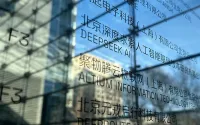Common Dreams / Published on Monday, January 14, 2008 by The Guardian/UKAndy Worthington
The sixth anniversary of the opening of the prison at Guantánamo Bay on Friday was marked by worldwideactions aimed at keeping the plight of the detainees, imprisoned without charge or trial, in the public eye.
On Cif, released detainee Moazzam Begg briefly ran though Guantánamo’s history, and included condemnations of the prison from three of the frontrunners for this year’s presidential nominations: Hillary Clinton, Barack Omama and John McCain.
Should any of these candidates replace George W Bush in the White House, the burning question they will face is not whether Guantánamo should be closed, but how this is to be achieved.
Of the 281 detainees who remain in Guantánamo - out of the 778 held throughout its history - it appears that up to 130 could be released without much difficulty. With a typical disregard for the law, the authorities have described them as too dangerous to be released, but not dangerous enough to be charged. They will, however, almost certainly override their concerns if pressure to scale down the prison’s population is maintained throughout the year.
Often the only obstacle to the release of these men is the administration’s insistence on stipulating their post-detention conditions with governments who are, understandably, unwilling to let the Americans dictate their own security arrangements.
More problematical are the remaining 150 detainees. Around 70 have been cleared for release, but the majority of these - from countries including China, Uzbekistan and various North African regimes - cannot be repatriated because of international treaties preventing the return of foreign nationals to countries where they face the risk of torture.
Attempts by the administration to find other countries to accept the cleared detainees have been largely fruitless. In 2006, Albania was prevailed upon to accept eight of them, who exchanged Guantánamo for a refugee camp in Tirana, but even the Albanians’ largesse has come to an end.
In the absence of any other countries willing to help clear up its mistakes, the administration has resorted to drawing up “memoranda of understanding” with countries well known for their human rights abuses, including Tunisia and Libya.
Designed to guarantee humane treatment for returned detainees, these arrangements recently suffered a setback when two repatriated Tunisians were imprisoned after trials regarded as corrupt by observers. The return of a third Tunisian was subsequently prevented by a US judge, and without these exit routes it remains unclear how the rest of the cleared detainees can be freed.
As for the remaining 80 detainees, the administration intends to prosecute them in war crimes trials, known as military commissions, which were dreamt up by vice-president Cheney and his close advisors in November 2001. Condemned by lawyers for relying on secret evidence, obtained through torture, which can be withheld from the defendant, the commissions have yet to demonstrate their viability.
After being struck down in the supreme court in 2006, they were revived last year, but have been criticised by their own judges, and are resolutely opposed by the detainees’ military defence lawyers. Their only alleged success - the prosecution of David Hicks - was no such thing. Seeing a confession as his only escape route, Hicks accepted a plea bargain, admitting to “material support for terrorism” and dropping claims of abuse by US forces in exchange for a short sentence in Australia that has just come to an end.
With such a poor record, it’s uncertain that the prosecution of the genuine terrorists in Guantánamo - no more than 40, according to various intelligence estimates - will proceed smoothly. The major obstacle facing the administration is its need to conceal evidence of torture, which remains illegal under domestic and international law.
If the commissions fail - as I believe they will - the next president of the US may well be forced to close Guantánamo by transferring those regarded as genuinely dangerous to the US mainland, to face trials in US courts before pliable juries who can be persuaded to overlook their torture.
In the case of the “high-value” detainees, including Khalid Sheikh Mohammed, who confessed last year that he was the architect of 9/11, such an approach will probably succeed, but the cost - to America’s moral standing, and to its long judicial tradition - will be immense. It will also highlight the extent to which Guantánamo, initially touted as a prison housing the “worst of the worst,” was, in fact, a self-defeating failure on an almost unimaginable scale.
Andy Worthington is a historian and journalist, based in London. He is the author of The Guantánamo Files: The Stories of the 774 Detainees in America’s Illegal Prison.






